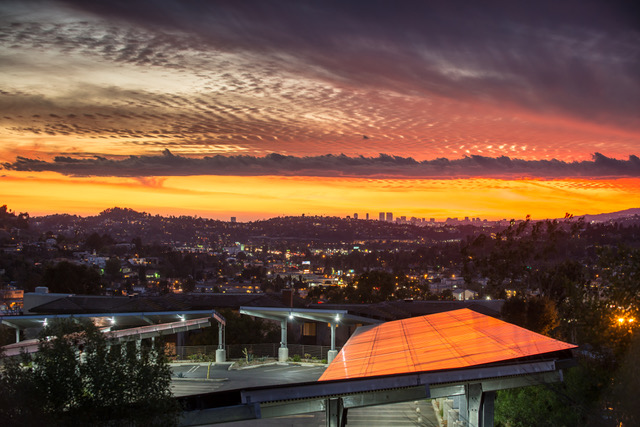Today, Occidental's 1 MW solar array is 10 years old. Since "first-light," on March 4th, 2013, the array has produced 17.85 GWh of electrical energy, 12.0% of the college's usage over the same time period.
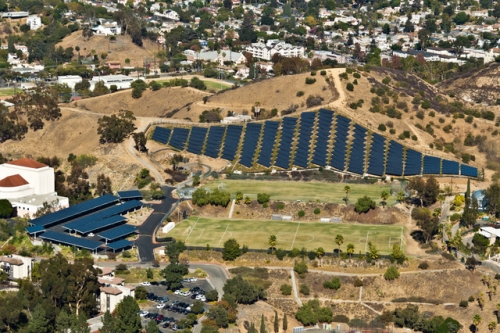
In the last year the array produced 1.61 GWh of electrical energy, about 10% below our average of 1.79 GWh. This was largely due to a breakdown of our main inverter (500 kW) for about month and a half in the middle of the summer, during what is normally a period of peak production. The cause of the problem was a broken motherboard and the length of the shutdown was due to the fact that these inverters are no longer manufactured and we had to get a custom board built. And, as you may have noticed, it’s been an unusually cloudy winter.
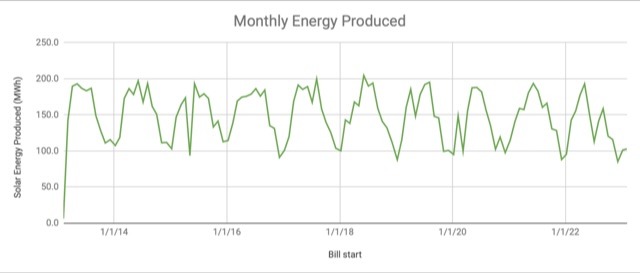
On a side note, this week we broke the Oxy record for annual rainfall (view All-Seasons RainRate) going back to 2009.
On the financial side of things, our electrical bills have been lower due to the energy generated by the solar array. Over the last year the solar array saved the college $342k, lower than expected due to the aforementioned production issues. To date the array has saved the college $3.25M on an investment of $3.35M. We are 97% of the way towards paying off the initial investment. Accounting for lost investment opportunities (endowment) the predicted payback period for the array is about 14 years, see graph below. The red curve shows what $3.35M in the endowment did and will do. The blue curve shows savings which are then assumed to be returned to the endowment. Originally we predicted the array would pay for itself in 12 years.
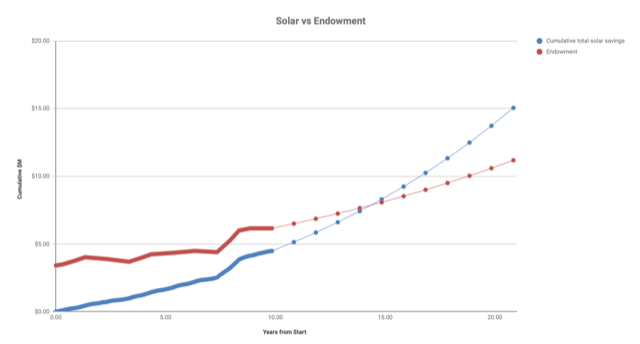
It’s a little distressing to hear about downtime with an investment as big as the solar array, but perspective is helpful. Let’s zoom out a bit and look at our 10-year track-record. If I focus on times when all the inverters are working and right after a big rain, i.e. likely clean, I find that the efficiency of the system (actual energy produced divided by predicted energy) has always been better than 98.8%. The hardware is good and doesn’t seem to be aging at all, a somewhat surprising finding.
In terms of the inverters we only lost one this summer, the other two were working fine. Doing the math I find an uptime of 99%. That’s not a bad track record though it is likely that we will see more failures and possibly have to replace these inverters in the next 10 years.
We track carefully money spent on the array for maintenance. Cumulative expenses to date are $106k. This sounds like a lot but it is only 0.3% per year on the $3.35M investment. For comparison commercial property maintenance rates are about 1%.
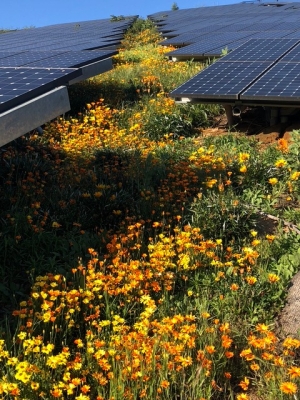
The biggest challenge has been optimizing the cleaning of the array. Yearly efficiencies (actual over expected) have varied from 85% to 96% and depend on rainfall and leaning. There is a student effort, called ARRCS for A Rainwater Capture and Cleaning System, which is in the works that will drastically lower the cost of cleaning and bring these efficiencies up closer to 100%.
Another maintenance item is to keep the big bushes down on the hillside which keeps the panels from being shaded and allows these flowers to flourish.
Over the years I’ve been asked, many times, to tell what I call “The Story of the Oxy Solar Array.” I’ve happily obliged as I think it is a story which highlights Oxy's desire to see positive change in our world, our willingness to work together on hard projects and the value of a liberal arts education and approach to life. With this 10th anniversary I thought I would share that story. Here is a recording of a Zoom talk I gave to students from USC’s School or Architecture.
